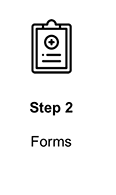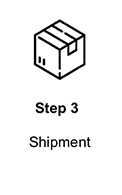Submitting Samples: Instructions for Accuracy
Ensure your potentially one-of-a kind sample is collected, labeled and submitted properly. Choose from the list of sample collection instructions below.
| Collecting Samples for Clinical Testing | Sample Types |
|---|---|
| Routine clinical samples | Whole Blood Plasma Serum Red Blood Cells (RBC) Urine |
| Non-Routine Liquid Biological Samples | CSF Breast Milk Exudates Lavage Fluid Oral Fluid |
| Non-Routine Solid Biological Samples | Stool Meconium Hair Nails |
| Samples - Metals Analyses | Whole Blood Plasma Red Blood Cells (RBC) Serum Urine |
Notes About Shipping Temperature: Ship specimens chilled unless indicated otherwise in the NMS Labs Test Catalog. Check now.
Notes About Specimen Labeling: Please use water-resistant ink when labeling specimens. Include the following information on each specimen:
- Name of the patient (subject, employee or patient)
- ID# or case number
- Specimen type (blood, serum, urine, hair, etc.)
- Date and time specimen was obtained
The following are general considerations for specimen collection, appropriate collection containers for specific testing and guidelines for sample submission.
For trace element, volatile compound analysis, specimen types other than blood, serum, plasma or urine, read additional instructions.
Note: The use of serum/plasma separator tubes is not recommended for use when collecting specimens for testing to be performed at NMS Labs. The use of these tubes can compromise test results.
Whole Blood refers to whole blood drawn into evacuated tubes (e.g., Vacutainer® tube) containing anticoagulant.
Plasma should be obtained by drawing blood into an anticoagulant, evacuated tube. Invert tube at least eight times to mix, immediately centrifuge for approximately 10 minutes at 3000 rpm, and carefully transfer the supernatant plasma into a labeled plastic container (polyethylene vial).
Serum should be obtained by drawing blood into an evacuated tube containing no anticoagulant and with a non-coated interior. Allow 20 minutes for clotting. Immediately centrifuge for approximately 10 minutes at 3000 rpm and carefully transfer the supernatant serum into a labeled, plastic container (polyethylene vial).
Red Blood Cells(RBC) should be prepared from whole blood using the procedure for plasma specimens. Transfer the plasma from the centrifuged red blood cell fraction and submit the red blood cells, labeling the specimen accordingly.
Urine specimens should be collected in a plastic (polyethylene) bottle. Do not fill bottle past the shoulder. Close with a screw cap, which has a self-sealing liner (e.g., 40 mL bottle and cap).
While not all biological fluids are found in large volumes, make every effort to collect as much as possible. Place fluid into a labeled screw-capped plastic container for shipping.
Stool: Collect an entire bowel movement and place into a clean, labeled 40 mL polyethylene bottle. Fill no more than 2/3 of the bottle. Write the total original weight on the label (mass or volume) of the specimen. Freeze. View frozen sample shipping instructions.
Meconium: Collect at least 5 grams, approximately 1 tablespoon, of the black-tarry Meconium sample and place into a clean 40 mL polyethylene bottle. The sample may be combined several times from each evacuation up to approximately 72 hours or when the sample starts to turn yellowish-green.
Specimens collected for trace-metals analyses must be protected from contamination during collection. Conduct specimen collection in a clean, dust free environment using appropriate certified metal-free collection containers. To reduce specimen contamination, powder-free gloves are recommended during collection. It is recommended that unexpected elevated results be verified by testing another specimen.
Blood, Plasma, or Red Blood Cells (RBC): To flush the collection device of metal contaminants, always draw a plain red top tube (no additive) first. Secondly, draw 7 mL of blood into a trace-metal free, EDTA Royal Blue Top Tube, unless otherwise indicated in the online test catalog specimen collection instructions. Always check the online test catalog for the most up to date collection requirements. Invert the Blue Top tube at least 8 times to ensure adequate mixing of the EDTA anticoagulant to prevent clotting. Discard the first red top tube appropriately unless being used for non-metals testing.
For RBC or Plasma samples, centrifuge the blood sample as soon as possible after collection for approximately 10 minutes at 3000 rpm. Place plasma into an acid washed plastic screw capped vial. Leave the RBCs in the original tube and replace stopper.
Serum: To flush the collection device of metal contaminants, always draw a plain Red Top Tube (no additive) first. Secondly, draw 7 mL of blood into a trace-metal free, evacuated tube containing no anticoagulant. Refer to the online test catalog for the most up to date collection requirements. Allow the specimen to clot for at least twenty (20) minutes. Centrifuge for approximately 10 minutes at 3000 rpm and transfer all of the serum into an acid washed plastic screw capped vial. Discard the first red top tube appropriately unless being used for non-metals testing.
Urine: Collect 20 mL of urine directly into a labeled trace-metal free (acid-washed, deionized water-rinsed, air-dried), polyethylene bottle with a plastic lined screw cap or an acid washed collection container. Always check the online test catalog for the most up to date collection requirements.
Nails: Nail clippings may contain analytes of interest, which were deposited during the growth of the nail. Nail clippings (at least 0.5 g) from each finger or toe should be collected and packaged separately in acid washed plastic bottles. Each bottle should be labeled with the weight, if known, of the nail collected and its source, e.g., right index finger.
The following are general instructions to guide you in the collection of volatile substances.
- The original container that the sample was collected in should be sent intact to NMS Labs for analysis.
Note: Serum Separator tubes are not suitable since the gel barrier often contains interfering substances. - DO NOT open the sample container between the time of collection and the time of analysis.
- Do not transfer the sample to a secondary container, since this transfer may result in decreased concentrations of the volatile substance of interest, or potential contamination of the sample.
- Fill the container as completely as possible to reduce the amount of airspace.
- Store and ship all tubes at refrigerate temperatures (with a frozen gel pack).
- Store and ship urine and tissue specimens tightly sealed and frozen (on dry ice).
While these directions are general in nature, analyses for particular volatile substances may have special needs (e.g., freezing, special containers, etc.)




